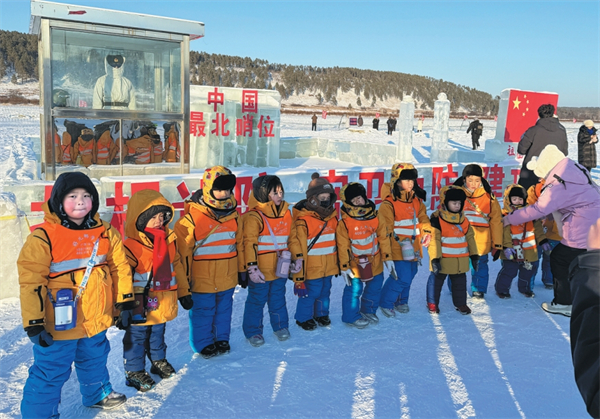Home>About Harbin
General Introduction
Updated : 2021-05-13
By ( chinadaily.com.cn )
Location: in Northeast China and the central area of Northeast Asia
Area: 53,100 square kilometers
History
Harbin is a city with a long history and no city wall. In the late Paleolithic era around 22,000 years ago, Harbin’s ancestors labored and lived before entering into the Neolithic Age 5,000 years ago and finally the late Yinshang Period (the Bronze Age) about 3,000 years ago. The city is the birthplace of both the Jin and Qing dynasties and in 1115 AD, the Jin Dynasty established its capital in Harbin’s present-day Acheng district.
By the end of the 19th century, there were dozens of villages in Harbin with a population of 30,000—this laid the foundation for the formation and development of a city. The construction of the Middle East Railway (from 1896 to 1903) brought an influx of foreign immigrants which boosted business and bolstered the financial district. At the beginning of the 20th century, Harbin became an open, international city which attracted 160,000 immigrants from 33 different countries—19 of which established consulates —and transformed the city into the economic and international center of North Manchuria.
In 1932, Harbin was under the control of the Japanese authorities and, upon liberation in 1945, hosted a population of 700,000. On April 28, 1946, the Northeast Democratic Allied Army entered and garrisoned the city, making it the first to be liberated at the time.

[Photo/VCG]
The city underwent economic reconstructure from 1958-1965 and during the Great Cultural Revolution, both the economy and the social order of the city were severely damaged, but since China opened its doors and adopted reform, the socio-economy of Harbin has made remarkable achievements. In recent years, Harbin’s economy has grown rapidly and has become one of the top-10 cities of urban competitiveness in China with a top-20 competitive tourist industry and has ranked among the top-10 in terms of overall strength. In terms of “the Happiest Cities in China,” Harbin ranks third.
Harbin actively constructed the national demonstration city of public transit and the national civilized city and it ranked the third place in the cities nominated in the national urban civilization degree index evaluation. Harbin has been awarded with a series of honors, including “City of Music”, “Beautiful City of Wetlands” and the “National Double-support Model City”. The Crime rate among ten thousand people keeps the lowest among all capital cities for three consecutive years. With the growing international presence and international influence, Harbin has evolved from an industrial city into a city with comprehensive strength and has established far-reaching reputation worldwide.
Administrative divisions
Harbin city governs nine districts — Daoli, Daowai, Nangang, Xiangfang, Pingfang, Songbei, Hulan, Acheng and Shuangcheng; seven counties — Bayan, Binxian, Yilan, Yanshou, Mulan, Tonghe and Fangzheng; as well as two county-level cities—Wuchang and Shangzhi.

Harbin ramps up childcare services
A new comprehensive service center for childcare in Harbin is expected to be finished by the end of the year.
-
Talent policies drive enterprise development in Harbin
Harbin's "30 New Talent Policies" represents an iterative upgrade to the talent policy system, helping attract and retain talent to bolster economic and social development.
-
Official website of 2025 Asian Winter Games goes live
Harbin, the host city of the 9th Asian Winter Games, has announced that the official website for the 2025 event has recently gone live.
-
Harbin launches measures to facilitate more foreign trade
In the first three quarters of 2023, the total import and export value of Heilongjiang province's goods trade hit 218.22 billion yuan.





